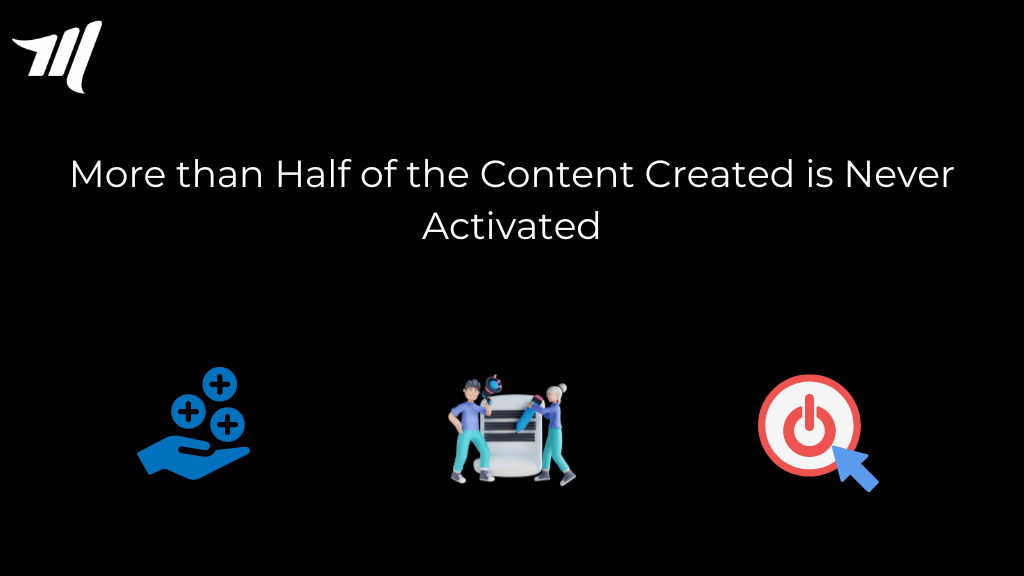Advertisers’ lack of access to the creative production lifecycle positions the industry to spend billions of dollars in 2024 on material that will never be used.
According to a survey conducted by creative firm CreativeX, the typical F500 business may be losing at least $25 million per year in underused creative assets. Across the sector, it equates to $100 billion in assets that are never used.
Advertisers expect genAI to generate more content rapidly, but more content does not always equal a better effect. Because there is a dearth of precise data across the content lifecycle, from development to activation, marketers need more visibility into whether and how their core assets are localized, versioned, and repurposed across markets, brands, channels, and agencies.
Without Visibility into Content Development, Companies Lose out on Possible Efficiencies
In today’s marketing world, organizations face increased pressure to create marketing efficiency. However, they invest in content generation without knowing how, by whom, or where it will be used.
This leads to inefficiencies in the content development lifecycle, which cost brands millions of dollars each year. According to CreativeX’s study, 52% of brand core assets were never engaged in their respective marketplaces. This means that paid-for creative work was never allowed to add value to the business or be exposed to customers.
As marketing budgets continue to tighten, advertisers should look for ways to improve efficiency throughout their creative lifecycle, rather than merely cutting expenses. Reallocating funding to activities that would generate more value may imply greater investment in activated content or increased expenditure in research or media.
GenAI is Going to Make the Content Development Task more Challenging
While generative AI can save production costs and time, this investment is pointless if the content is never deployed at all. Marketers will not profit fully from AI until they have visibility to track content from conception to activation and guardrails in place to assure creative quality.
AI can assist with this visibility. CreativeX’s Creative Lifecycle application is powered by AI/ML-driven asset-matching technology, which provides insight into where and how key assets are localized and activated, as well as how often they are reused.
The app was created in conjunction with The Brandtech Group, OLIVER, and marketers leading the world in digital transformation, including Bayer. For Bayer’s marketing team, Creative Lifecycle has provided unparalleled visibility into their content generation process.
David Jones, founder, and CEO of The Brandtech Group, which collaborated with CreativeX to test and create the new technology, stated: “When I hear all the buzz about artificial intelligence and how it’s going to transform marketing, my reaction is that it’s already here. It has already been happening for some time, not only since ChatGPT first appeared.
“It is affecting every area of marketing. Creative Lifecycle is an excellent example of an AI application that goes well beyond content creation, which is what many businesses are now doing. It provides global brands with knowledge that they have never had before, and our teams are in a position to generate a step-change in efficiency, to enhance the usage of our clients’ finest.
Gaining insight into an asset’s creative lifetime enables organizations to address more important concerns, notably how the material is utilized and repurposed, facilitating a data-driven dialogue between global and local teams.
Anastasia Leng, CEO and creator of CreativeX, stated: “CreativeX has been utilizing technology to evaluate inefficiencies in our content production cycle for years, but this is arguably one of the most inefficient trends we’ve seen yet.
“The industry devotes a lot of airtime to the idea that content wears out, yet research reveals that more than half of the commercials we make never reach the customer, much alone have the opportunity to wear in. Our newest creative data platform, Creative Lifecycle, aptly titled, allows businesses to watch how their content is utilized end-to-end, delivering much-needed insight into our creative assets’ activation and re-usage rates.”
In the study, CreativeX’s application was utilized to examine 1,284 key assets related to 422,272 postings in over 50 marketplaces in 2023. Assuming a working-to-non-working media expenditure ratio of 70:30 for the typical F500 firm and Dentsu’s projected media spend estimates for 2024.





